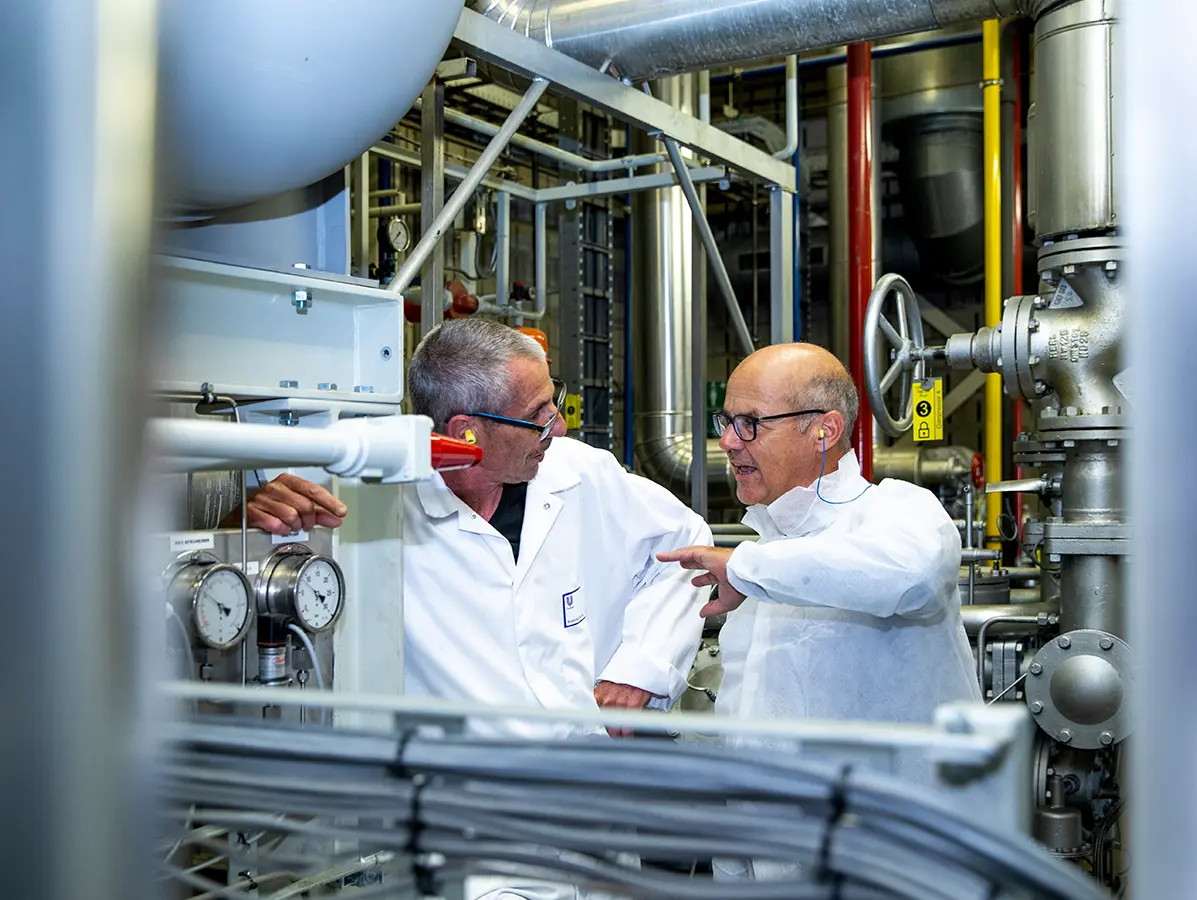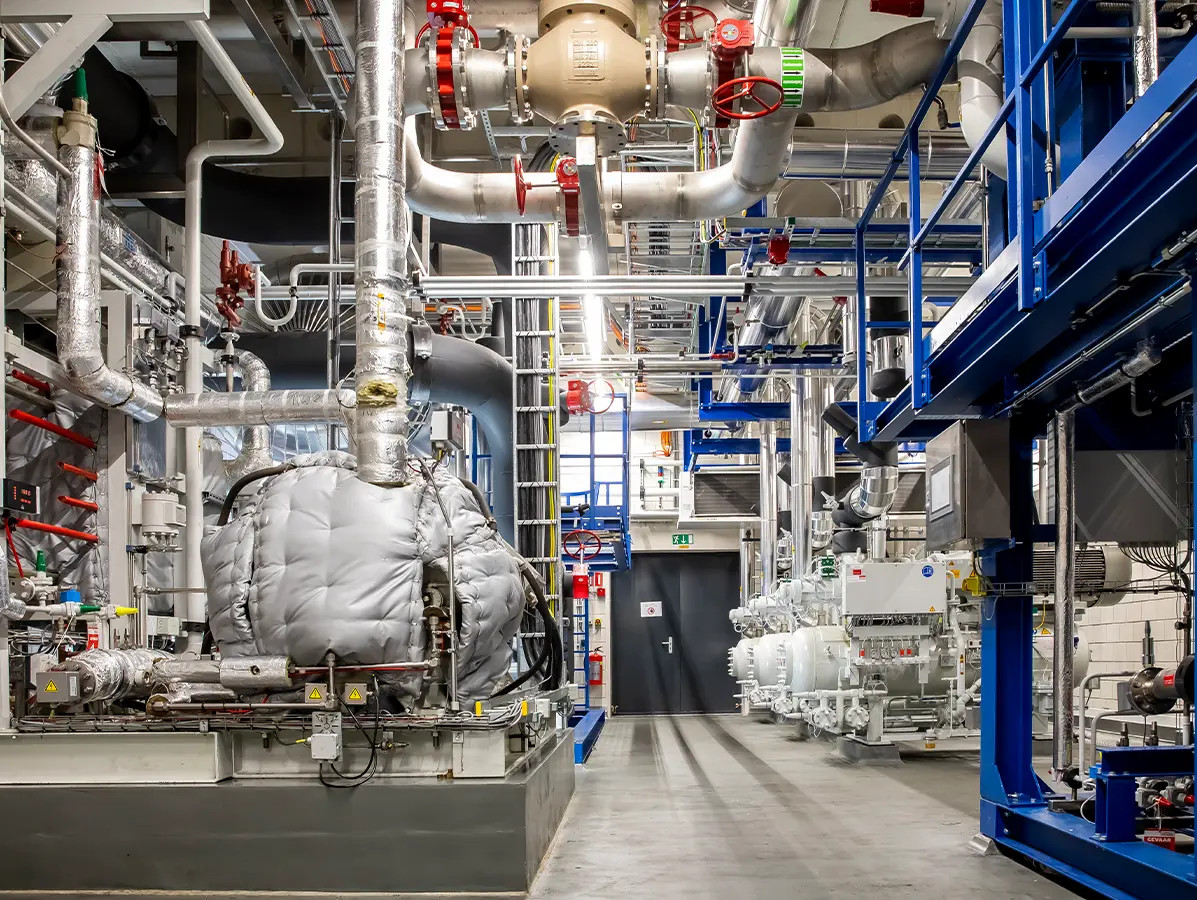
New cooling and heating technologies offer solutions for the sustainability challenges faced by food processors, such as phasing out synthetic refrigerants and reducing CO2 emissions. Why does modern cooling and heating technology make production processes both more sustainable and more cost-effective? Find out here.
It’s often assumed that sustainability involves hefty investments and a lot of hassle. However, from a financial perspective, food processors actually benefit from opting for modern cooling and heating technologies. Erik Hoogendoorn, Manager of Technology & Innovation at Equans Refrigeration & Heating Solutions, explains how this works.
“If cooling is part of the production process, sustainability through cooling and heating technology provides the opportunity to phase out synthetic refrigerants, including R404A and R507. European regulations to reduce their usage are making these substances more expensive and harder to obtain. As a result, businesses relying on them face serious risks to their continuity. Companies increasingly encounter situations where synthetic refrigerants are simply unavailable. Businesses that switch to natural refrigerants can reduce their electricity bill by up to 40%, as these refrigerants are much more energy-efficient. There are also interesting subsidies available for implementing sustainable cooling technologies, such as the Energy Investment Allowance (EIA). This scheme allows you to deduct 40% of the investment costs from your taxable profit, on top of the usual depreciation.”
Sustainability through cooling and heating technology also offers the opportunity to design production processes in a smarter, more energy-efficient way. Erik explains: “A commonly used heat carrier is steam. This heat is often generated at high temperatures, while the processes themselves typically require lower temperatures. Take, for example, steam at 180°C produced by a gas-fired boiler for a sterilization process at 120°C or a pasteurization process at 78°C. This leads to unnecessarily high consumption costs, along with large quantities of fossil fuel being burned.”
When a steam installation reaches the end of its lifecycle, it’s time for a new investment. According to Hoogendoorn, this is the moment to reassess the overall heating supply: “Do certain production methods require adjustments? Are there nearby companies or energy producers generating steam that you could use? Are there opportunities for heat recovery within your own factory? Technological advancements have significantly improved the energy efficiency of steam and heat-dependent processes in recent years. There are plenty of options for clean and efficient steam and heat generation, even without using gas.”

Linking energy flows yields the greatest returns, Erik states. “The heat released from processes such as cooling, heating, blanching, drying, cleaning, and pasteurizing is often discharged into the air or flushed away with wastewater. With the right measures, waste heat from one process can be used in another. The key condition for direct use is that the temperature of the residual heat must be higher than the temperature required by the other process. For example, if you have residual heat at 75°C and another process requires 60°C, we can link those processes.”
When linking energy flows, it’s advisable to aim for the most efficient cascade possible: a process in which users (processes) requiring high-temperature heat are served first, followed by processes that can operate with lower temperatures. At the end of the cycle, the remaining heat is returned to the source, starting the cycle anew. “Cascading ensures maximum heat utilization and is essential for an optimal heat and energy transition.”
If higher heat temperatures are needed than the residual heat provides, the residual heat can be sustainably upgraded using a heat pump or e-boiler. “This makes the steam or heat temperature suitable for the heat-demanding process. At Equans, we don’t just deliver a heat pump or other sustainable solution—we deliver performance (COP) and, therefore, certainty. For optimal energy efficiency, we aim for the smallest possible temperature lift—the difference between the source temperature and the temperature needed for the (initial) process in the cascade. The smaller this gap, the higher the efficiency of the heat pump (COP). By linking energy flows, you position your company as a sustainable market player while benefiting from lower energy costs.”
That modern cooling and heating technology offers much more than just cooling and heating, should be obvious. You gain lower energy costs, a more sustainable production process with fewer emissions, and reduced tax burdens. Additionally, by no longer relying on foreign gas or gas from Groningen, you’re protected against rising taxes and gas prices. “An added benefit is that sustainability enhances your company’s image—a priceless advantage,” concludes Erik.
Source: Vakblad Voedingsindustrie 2025